-
 Bitcoin
Bitcoin $101,898.5005
-0.75% -
 Ethereum
Ethereum $2,258.1125
-1.07% -
 Tether USDt
Tether USDt $1.0004
0.01% -
 XRP
XRP $2.0178
-2.93% -
 BNB
BNB $624.0243
-1.53% -
 Solana
Solana $134.3298
-0.90% -
 USDC
USDC $0.9999
0.01% -
 TRON
TRON $0.2675
-2.05% -
 Dogecoin
Dogecoin $0.1538
-1.96% -
 Cardano
Cardano $0.5482
-1.11% -
 Hyperliquid
Hyperliquid $35.5636
5.45% -
 Bitcoin Cash
Bitcoin Cash $453.4902
-1.66% -
 Sui
Sui $2.5134
-2.97% -
 UNUS SED LEO
UNUS SED LEO $9.1292
1.77% -
 Chainlink
Chainlink $11.8457
-1.60% -
 Stellar
Stellar $0.2312
-2.73% -
 Avalanche
Avalanche $16.9721
0.29% -
 Toncoin
Toncoin $2.7549
-3.82% -
 Shiba Inu
Shiba Inu $0.0...01081
-1.10% -
 Litecoin
Litecoin $80.8250
-0.71% -
 Hedera
Hedera $0.1374
0.21% -
 Monero
Monero $305.4827
-2.36% -
 Ethena USDe
Ethena USDe $1.0006
0.00% -
 Dai
Dai $1.0000
-0.01% -
 Polkadot
Polkadot $3.2085
-3.12% -
 Bitget Token
Bitget Token $4.0845
-3.13% -
 Uniswap
Uniswap $6.3353
-1.63% -
 Pi
Pi $0.5085
-0.70% -
 Pepe
Pepe $0.0...08913
-3.82% -
 Aave
Aave $232.7090
-0.58%
Is MFI effective in the time-sharing chart? How to set the time-sharing MFI parameters?
MFI effectively assesses money flow in crypto markets on time-sharing charts; adjust parameters like period and levels for optimal trading signals.
May 23, 2025 at 09:08 am
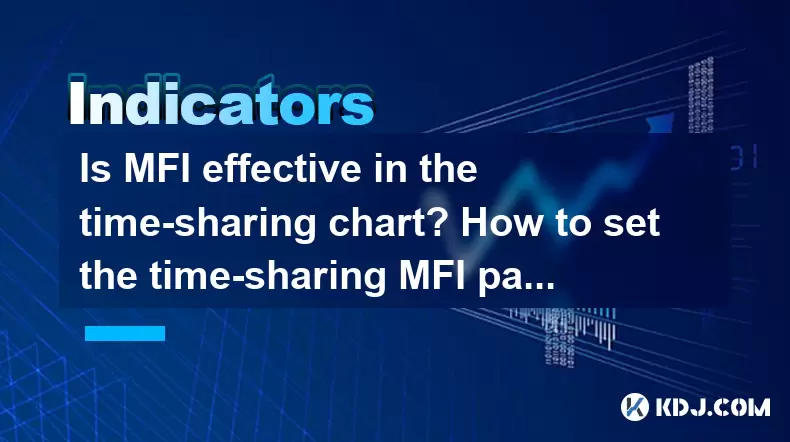
The Money Flow Index (MFI) is a popular technical indicator used in the cryptocurrency market to assess the strength and direction of money flowing in and out of an asset. When it comes to using MFI on a time-sharing chart, its effectiveness and the appropriate parameter settings are crucial for traders looking to make informed decisions. This article delves into the effectiveness of MFI on time-sharing charts and provides a detailed guide on setting up the MFI parameters for optimal use.
Understanding MFI and Time-Sharing Charts
The Money Flow Index (MFI) is a momentum indicator that measures the inflow and outflow of money into a security over a specified period. It is often likened to the Relative Strength Index (RSI) but incorporates volume into its calculation, making it a more comprehensive tool for assessing buying and selling pressure.
Time-sharing charts, on the other hand, display price movements within short intervals, typically ranging from one minute to one hour. These charts are particularly useful for day traders who need to make quick decisions based on short-term market movements.
Effectiveness of MFI on Time-Sharing Charts
The effectiveness of MFI on time-sharing charts can be attributed to several factors. Firstly, MFI's ability to incorporate volume makes it an excellent tool for identifying potential reversals and continuations in short-term price movements. Since time-sharing charts provide detailed insights into price movements over short intervals, the inclusion of volume data can enhance the accuracy of signals generated by the MFI.
Secondly, MFI's sensitivity to price changes makes it well-suited for time-sharing charts. The indicator can quickly respond to price movements, providing timely signals that are crucial for traders operating on short time frames. This sensitivity can help traders identify overbought and oversold conditions more effectively on a time-sharing chart.
However, it's important to note that MFI's effectiveness can be influenced by the chosen parameters. The default settings might not be optimal for all time-sharing charts, and traders need to adjust these parameters to suit their specific trading strategies and the volatility of the cryptocurrency they are trading.
Setting Up MFI Parameters on Time-Sharing Charts
To set up the MFI parameters effectively on a time-sharing chart, traders need to consider the time frame and the asset's volatility. Here is a step-by-step guide to setting up MFI parameters on a time-sharing chart:
Choose the Time Frame: Decide on the time frame for your time-sharing chart. Common intervals include 1-minute, 5-minute, 15-minute, and 30-minute charts. The choice of time frame will depend on your trading strategy and the level of detail you require.
Select the MFI Period: The default period for MFI is typically set to 14. However, for time-sharing charts, you might want to experiment with shorter periods to increase the indicator's sensitivity to price movements. A period of 5 to 10 might be more suitable for a 1-minute or 5-minute chart, while a period of 10 to 14 might work better for a 15-minute or 30-minute chart.
Adjust the Overbought and Oversold Levels: The default overbought and oversold levels for MFI are 80 and 20, respectively. These levels can be adjusted based on the asset's volatility. For highly volatile cryptocurrencies, you might want to set the overbought level to 75 and the oversold level to 25 to avoid false signals.
Monitor and Fine-Tune: After setting up the MFI parameters, monitor the indicator's performance over several trading sessions. Fine-tune the period and overbought/oversold levels based on the signals' accuracy and your trading strategy's requirements.
Interpreting MFI Signals on Time-Sharing Charts
Interpreting MFI signals on time-sharing charts requires a keen understanding of the indicator's dynamics. When the MFI crosses above the 80 level, it indicates that the asset is overbought, suggesting a potential price correction. Conversely, when the MFI falls below the 20 level, it suggests that the asset is oversold, indicating a possible price rebound.
Additionally, divergence between the MFI and price movements can provide valuable insights. For instance, if the price is making new highs while the MFI is failing to reach new highs, it could signal a bearish divergence and a potential reversal. Similarly, if the price is making new lows while the MFI is not, it could indicate a bullish divergence and a possible upward reversal.
Practical Application of MFI on Time-Sharing Charts
To illustrate the practical application of MFI on time-sharing charts, consider the following scenario. You are trading Bitcoin on a 5-minute time-sharing chart, and you have set the MFI period to 10, with overbought and oversold levels at 75 and 25, respectively.
Scenario 1: The MFI crosses above 75, indicating that Bitcoin is overbought. You decide to sell a portion of your holdings, anticipating a price correction. A few minutes later, the price indeed corrects, and you exit your position at a profit.
Scenario 2: The MFI falls below 25, signaling that Bitcoin is oversold. You see this as an opportunity to buy, expecting a price rebound. After a short period, the price does rebound, and you exit your position with a gain.
In both scenarios, the MFI provided timely signals that allowed you to make profitable trades based on short-term price movements.
Combining MFI with Other Indicators
While MFI can be effective on its own, combining it with other technical indicators can enhance its reliability and provide a more comprehensive view of market conditions. Moving averages, Bollinger Bands, and MACD are among the indicators that can complement MFI on time-sharing charts.
For instance, you might use a 50-period moving average to identify the overall trend and then use MFI to time your entries and exits within that trend. If the moving average is trending upwards and the MFI indicates an oversold condition, it could be a strong signal to buy. Conversely, if the moving average is trending downwards and the MFI indicates an overbought condition, it might be a good time to sell.
Frequently Asked Questions
Q: Can MFI be used effectively on longer time frames like daily or weekly charts?
A: Yes, MFI can be used effectively on longer time frames. The key is to adjust the MFI period and overbought/oversold levels to suit the longer time frame. For instance, a period of 14 to 21 might be more appropriate for daily charts, while a period of 21 to 28 could work better for weekly charts.
Q: How does the volume data affect the MFI's performance on time-sharing charts?
A: Volume data plays a crucial role in the MFI's calculation, making it more sensitive to changes in buying and selling pressure. On time-sharing charts, where price movements can be highly volatile, the inclusion of volume data helps to filter out false signals and provides a more accurate representation of market sentiment.
Q: Are there any specific cryptocurrencies where MFI performs better on time-sharing charts?
A: MFI can be effective across various cryptocurrencies, but its performance may vary based on the asset's liquidity and volatility. Highly liquid cryptocurrencies like Bitcoin and Ethereum tend to provide more reliable MFI signals on time-sharing charts due to their higher trading volumes and less erratic price movements.
Q: How can I avoid false signals when using MFI on time-sharing charts?
A: To avoid false signals, consider the following strategies:
- Use longer MFI periods to reduce the indicator's sensitivity to short-term price fluctuations.
- Combine MFI with other indicators like moving averages or Bollinger Bands to confirm signals.
- Monitor the asset's overall trend and use MFI to time entries and exits within that trend.
- Adjust the overbought and oversold levels based on the asset's volatility to minimize false signals.
Disclaimer:info@kdj.com
The information provided is not trading advice. kdj.com does not assume any responsibility for any investments made based on the information provided in this article. Cryptocurrencies are highly volatile and it is highly recommended that you invest with caution after thorough research!
If you believe that the content used on this website infringes your copyright, please contact us immediately (info@kdj.com) and we will delete it promptly.
- Cryptocurrencies, Coingecko, and Trending Tokens: What's Hot Now?
- 2025-06-23 23:05:12
- Bitcoin, Meerkat, and Onchain Engagement: A New Era of Crypto
- 2025-06-23 23:25:12
- Cloud Mining, Bitcoin, and XRP: A 2025 Perspective
- 2025-06-23 23:25:12
- Neo Pepe Coin: Meme Crypto with Explosive Potential?
- 2025-06-23 23:45:12
- FUNToken: Decoding Past Trends and Getting Started in the Gaming Crypto Sphere
- 2025-06-23 22:25:12
- Eyenovia Goes Crypto: A HYPE Treasury and Potential Rebrand
- 2025-06-23 23:45:12
Related knowledge

Is it contradictory that the moving average system is arranged in a bullish pattern but the DMI shows a decline in trend strength?
Jun 23,2025 at 11:43pm
Understanding the Moving Average and DMI RelationshipIn cryptocurrency trading, technical analysis plays a crucial role in identifying potential trends and making informed decisions. Two of the most commonly used indicators are the Moving Average (MA) and the Directional Movement Index (DMI). While both tools aim to provide insight into market direction...

What is the significance of the gap formed by the gap opening not being filled within five days?
Jun 23,2025 at 09:42pm
Understanding Gaps in Cryptocurrency TradingIn the world of cryptocurrency trading, a gap refers to a situation where the price of an asset jumps from one level to another without any trading activity occurring between those two levels. This often happens over weekends or holidays when the market is closed, and significant news or events occur that impa...
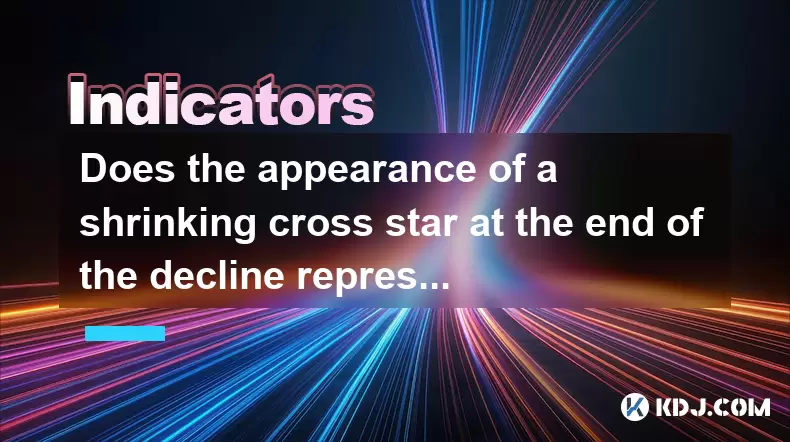
Does the appearance of a shrinking cross star at the end of the decline represent a signal to stop the decline?
Jun 24,2025 at 12:14am
Understanding the Shrinking Cross Star PatternIn the world of cryptocurrency trading, candlestick patterns play a crucial role in technical analysis. One such pattern is the shrinking cross star, which often appears at the end of a downtrend. This pattern consists of a candle with a small body, typically appearing after a series of bearish candles, and ...
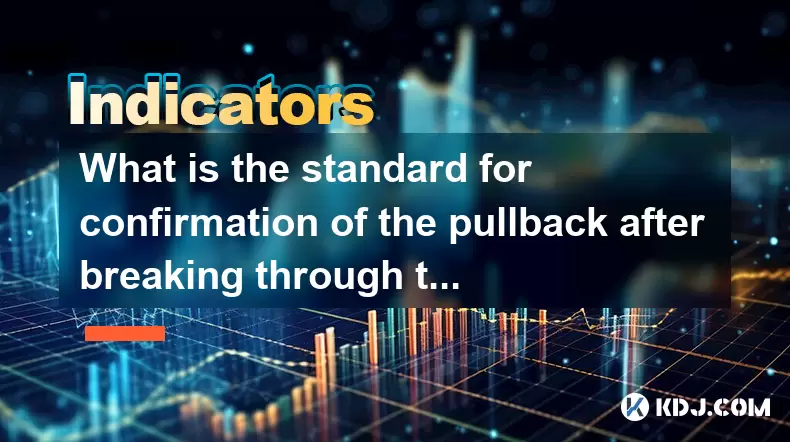
What is the standard for confirmation of the pullback after breaking through the neckline with large volume?
Jun 23,2025 at 11:28pm
Understanding the Neckline in Technical AnalysisIn technical analysis, the neckline is a critical support or resistance level that appears in chart patterns such as head and shoulders, double tops, and double bottoms. It typically connects two or more lows (in the case of a head and shoulders top) or highs (in the case of a head and shoulders bottom). W...
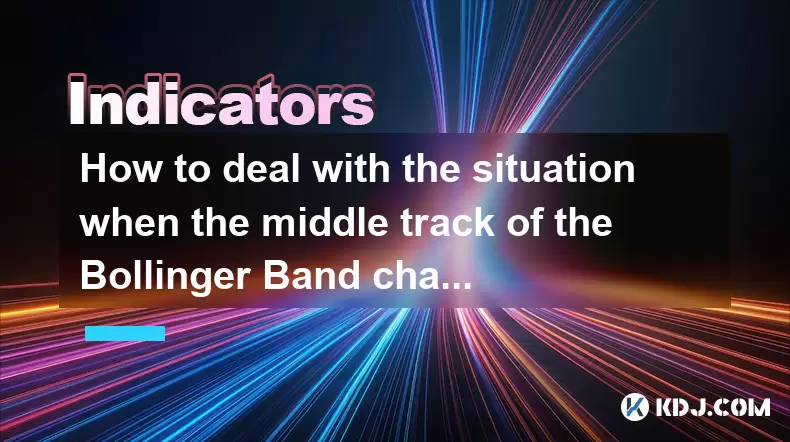
How to deal with the situation when the middle track of the Bollinger Band changes from support to resistance?
Jun 23,2025 at 11:22pm
Understanding the Bollinger Band Middle TrackThe Bollinger Band is a widely used technical indicator in cryptocurrency trading. It consists of three lines: the upper band, the lower band, and the middle track, which is typically a 20-period simple moving average (SMA). Traders often rely on the middle track as a dynamic support or resistance level. Howe...
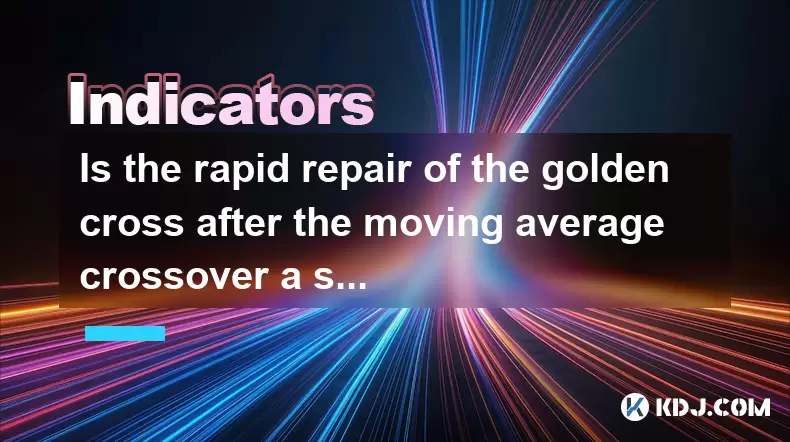
Is the rapid repair of the golden cross after the moving average crossover a signal of inducing short selling?
Jun 24,2025 at 12:01am
Understanding Moving Averages and Their Role in Technical AnalysisIn the realm of technical analysis, moving averages (MAs) are among the most widely used tools by traders to identify trends and potential reversals. These indicators smooth out price data over a specific time period, offering a clearer view of market direction. The two most common types ...

Is it contradictory that the moving average system is arranged in a bullish pattern but the DMI shows a decline in trend strength?
Jun 23,2025 at 11:43pm
Understanding the Moving Average and DMI RelationshipIn cryptocurrency trading, technical analysis plays a crucial role in identifying potential trends and making informed decisions. Two of the most commonly used indicators are the Moving Average (MA) and the Directional Movement Index (DMI). While both tools aim to provide insight into market direction...

What is the significance of the gap formed by the gap opening not being filled within five days?
Jun 23,2025 at 09:42pm
Understanding Gaps in Cryptocurrency TradingIn the world of cryptocurrency trading, a gap refers to a situation where the price of an asset jumps from one level to another without any trading activity occurring between those two levels. This often happens over weekends or holidays when the market is closed, and significant news or events occur that impa...

Does the appearance of a shrinking cross star at the end of the decline represent a signal to stop the decline?
Jun 24,2025 at 12:14am
Understanding the Shrinking Cross Star PatternIn the world of cryptocurrency trading, candlestick patterns play a crucial role in technical analysis. One such pattern is the shrinking cross star, which often appears at the end of a downtrend. This pattern consists of a candle with a small body, typically appearing after a series of bearish candles, and ...

What is the standard for confirmation of the pullback after breaking through the neckline with large volume?
Jun 23,2025 at 11:28pm
Understanding the Neckline in Technical AnalysisIn technical analysis, the neckline is a critical support or resistance level that appears in chart patterns such as head and shoulders, double tops, and double bottoms. It typically connects two or more lows (in the case of a head and shoulders top) or highs (in the case of a head and shoulders bottom). W...

How to deal with the situation when the middle track of the Bollinger Band changes from support to resistance?
Jun 23,2025 at 11:22pm
Understanding the Bollinger Band Middle TrackThe Bollinger Band is a widely used technical indicator in cryptocurrency trading. It consists of three lines: the upper band, the lower band, and the middle track, which is typically a 20-period simple moving average (SMA). Traders often rely on the middle track as a dynamic support or resistance level. Howe...

Is the rapid repair of the golden cross after the moving average crossover a signal of inducing short selling?
Jun 24,2025 at 12:01am
Understanding Moving Averages and Their Role in Technical AnalysisIn the realm of technical analysis, moving averages (MAs) are among the most widely used tools by traders to identify trends and potential reversals. These indicators smooth out price data over a specific time period, offering a clearer view of market direction. The two most common types ...
See all articles
























































































